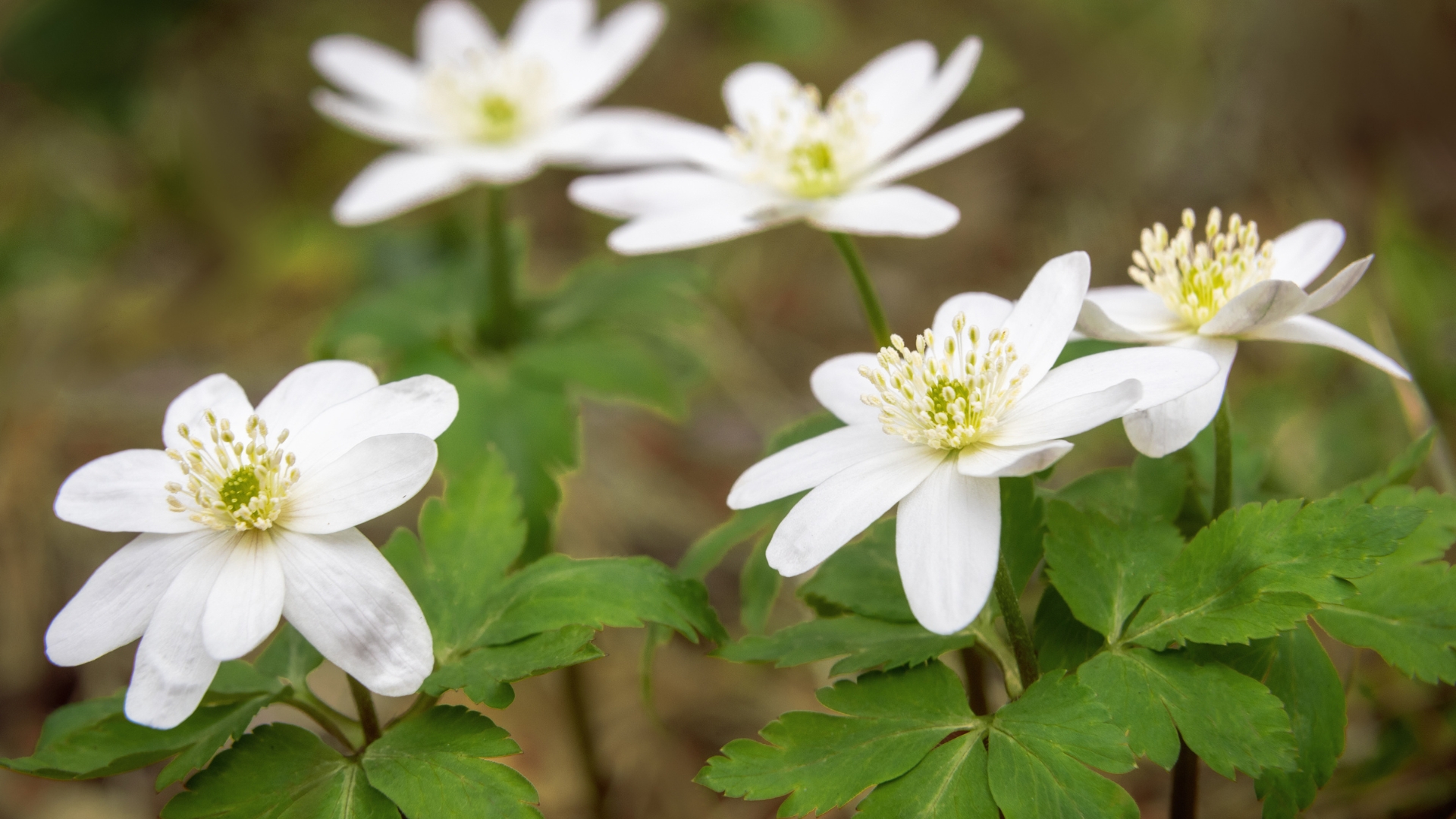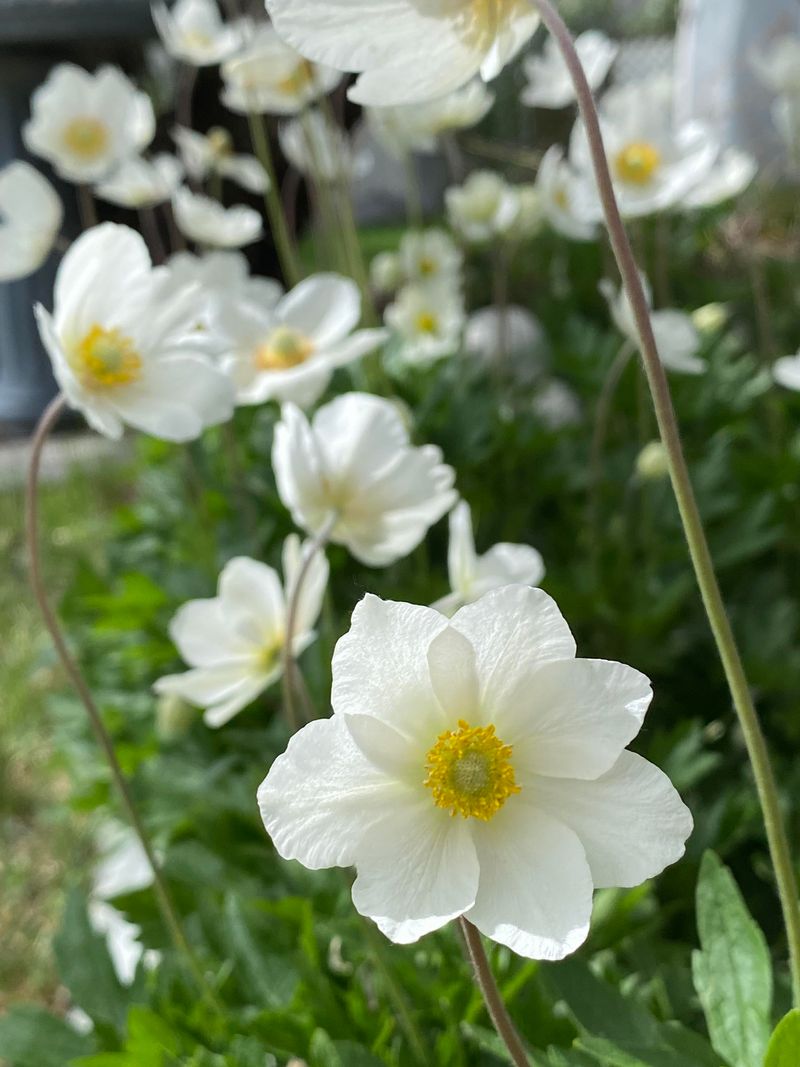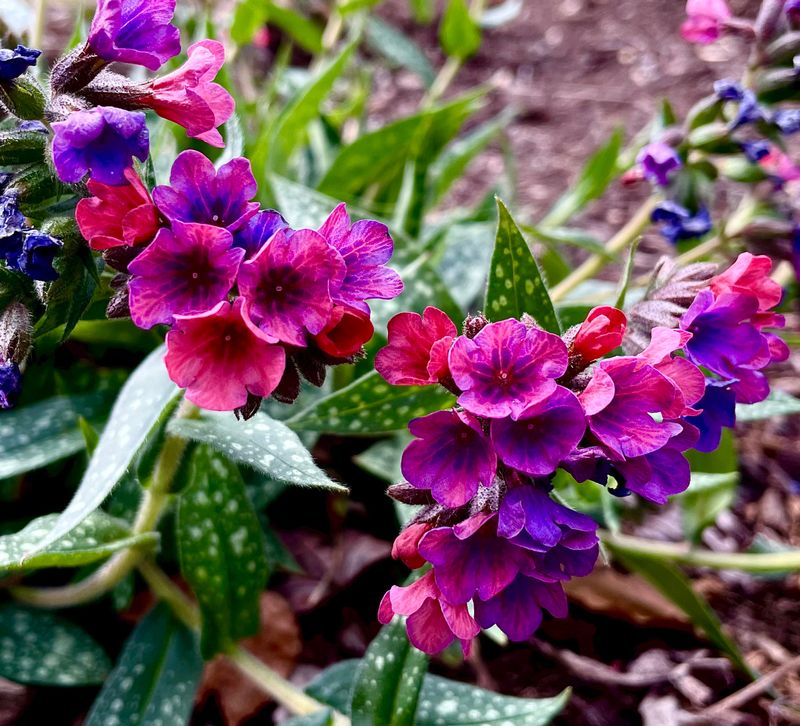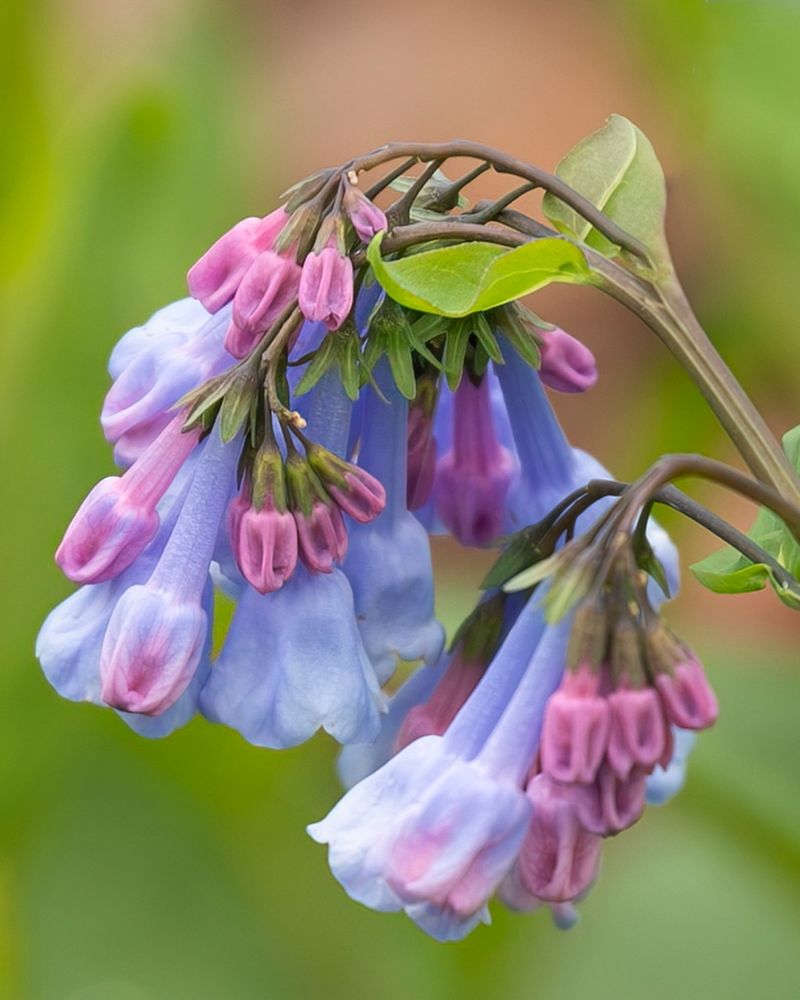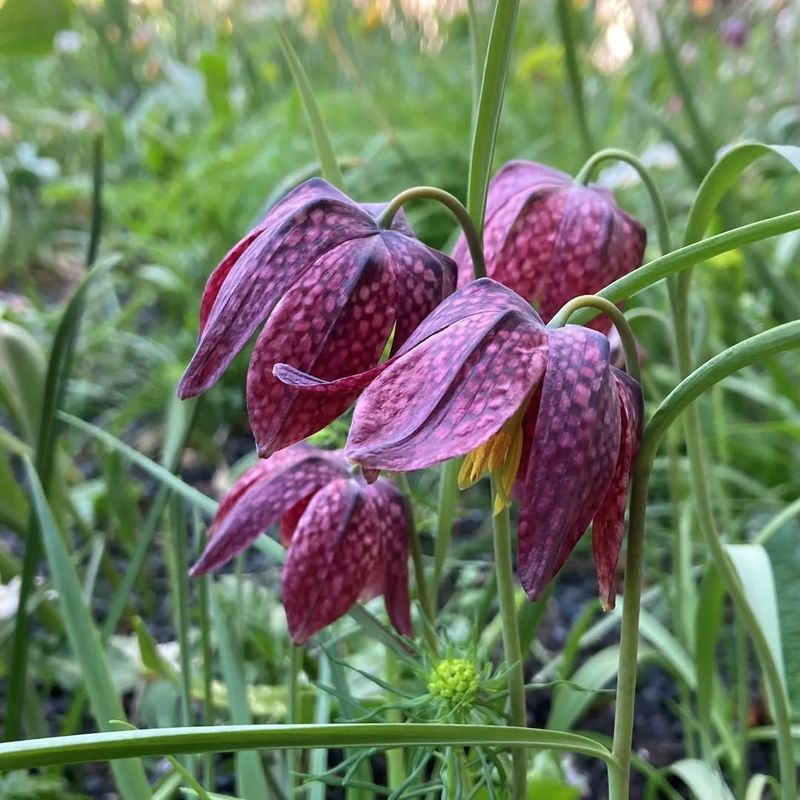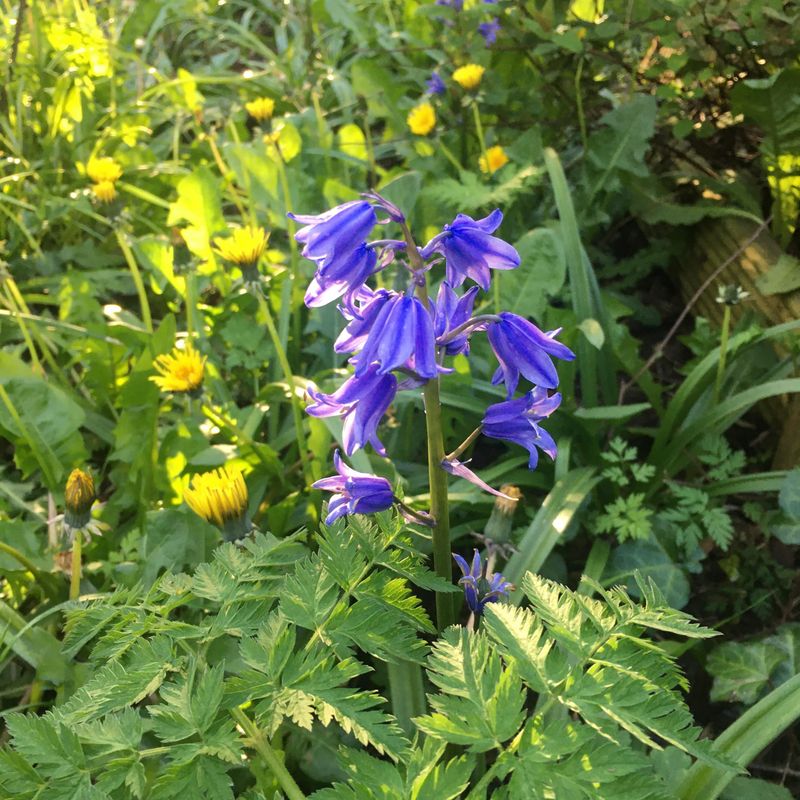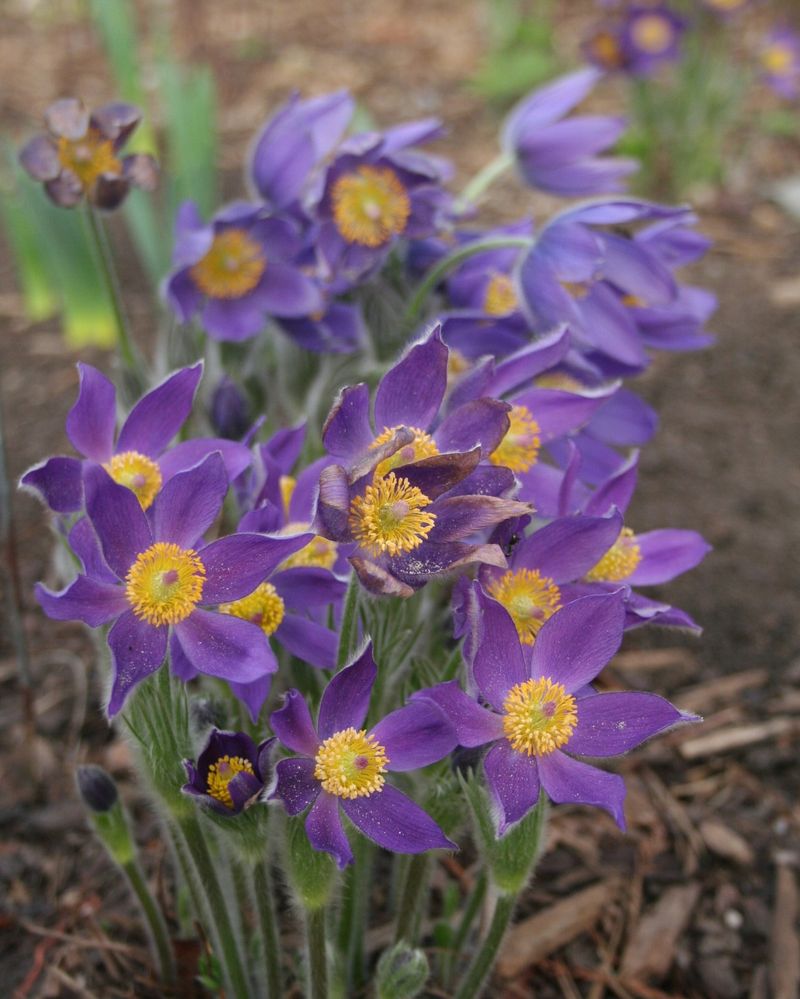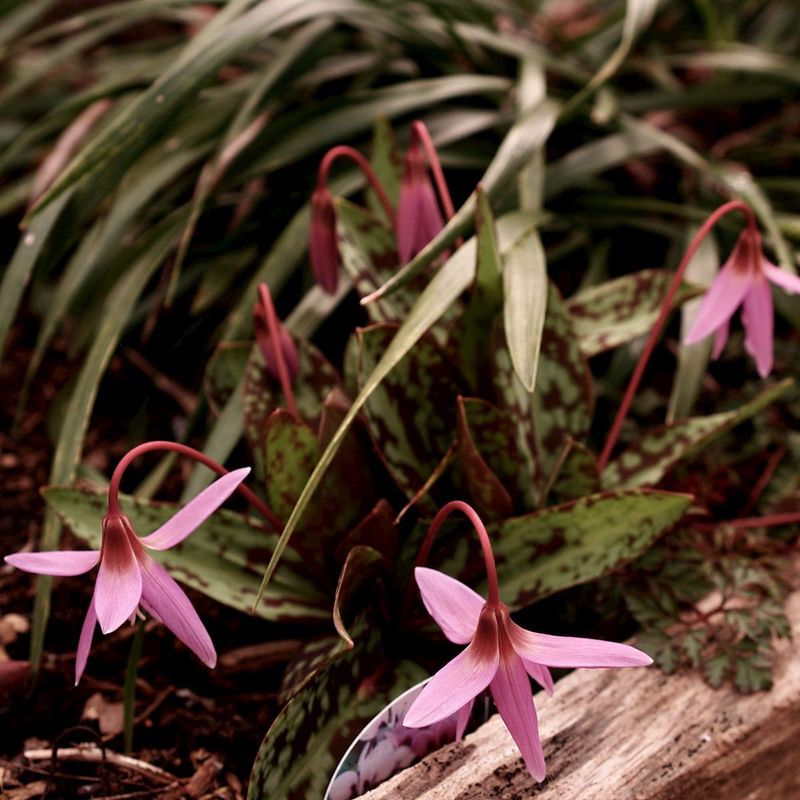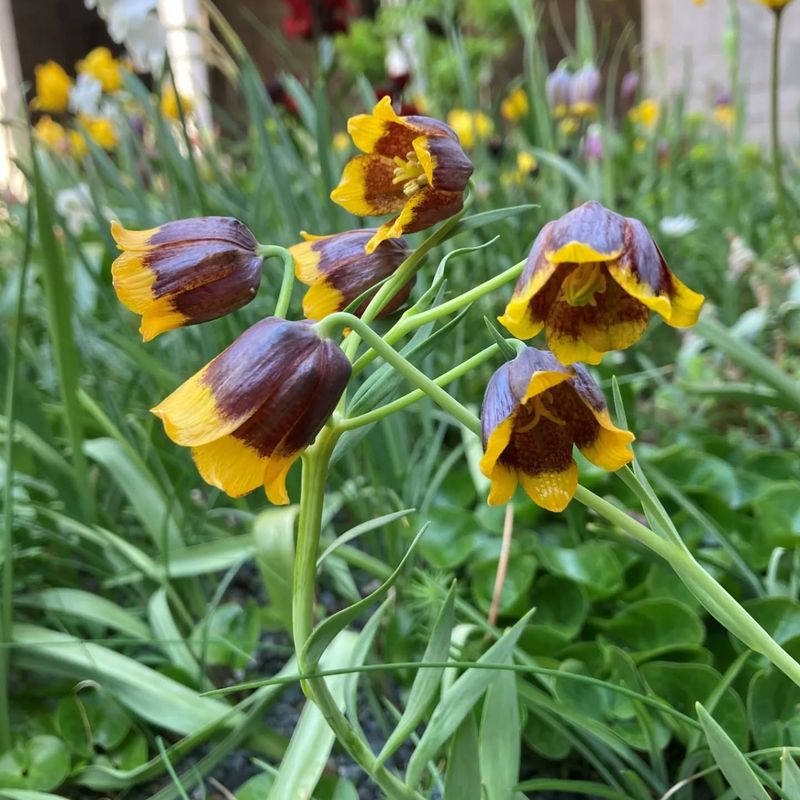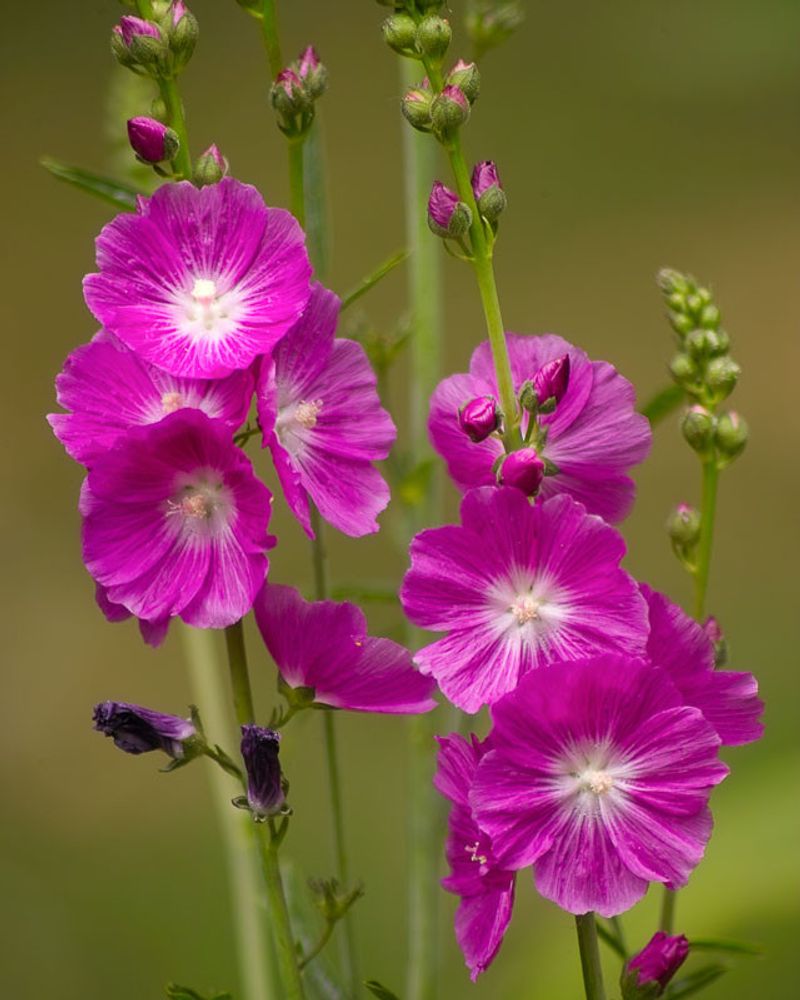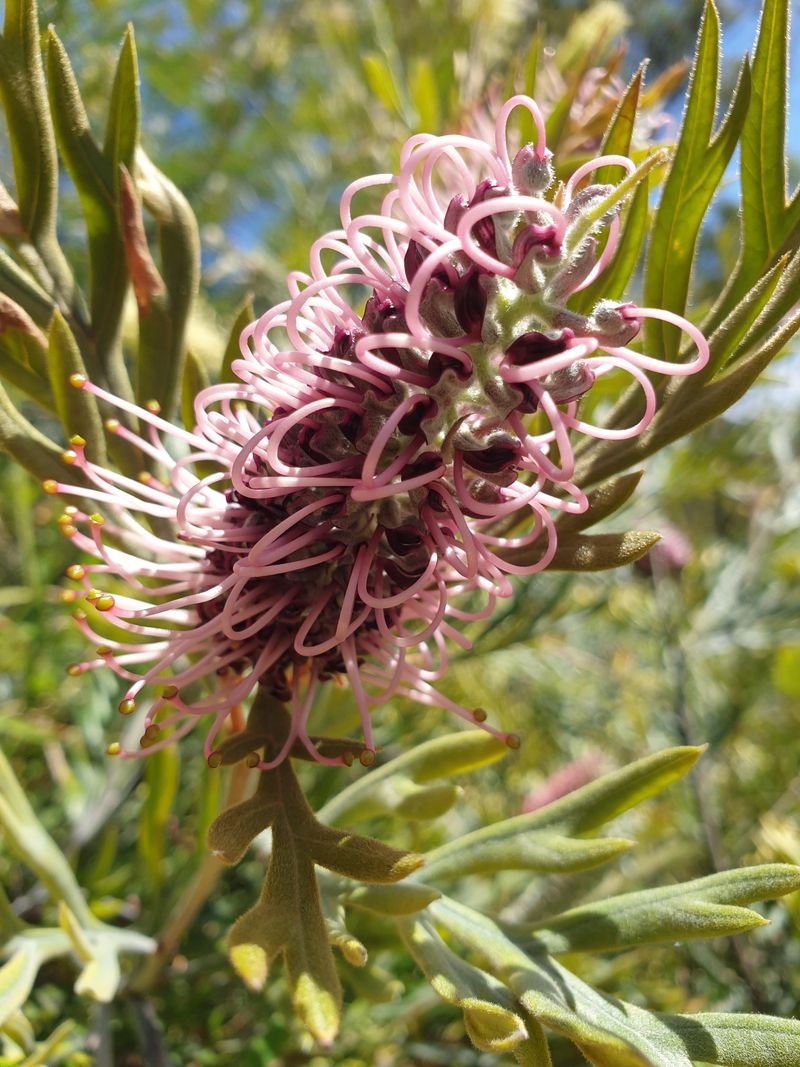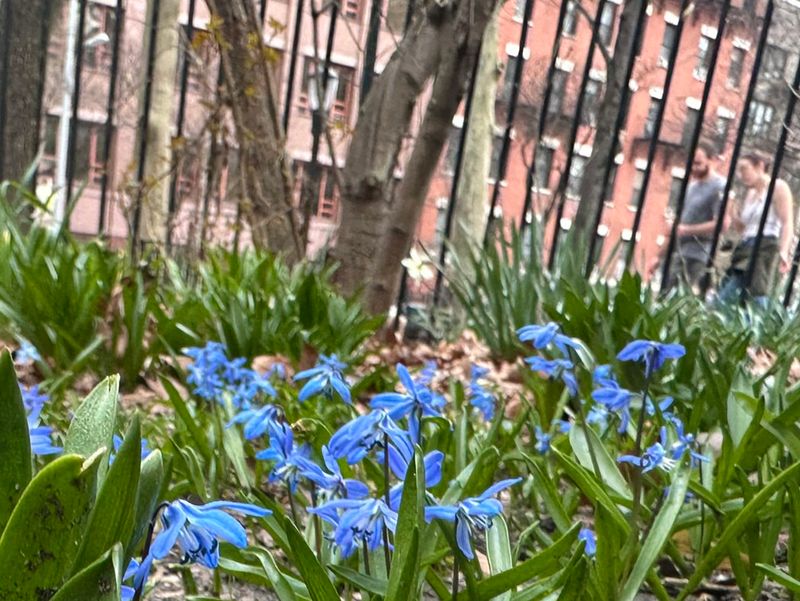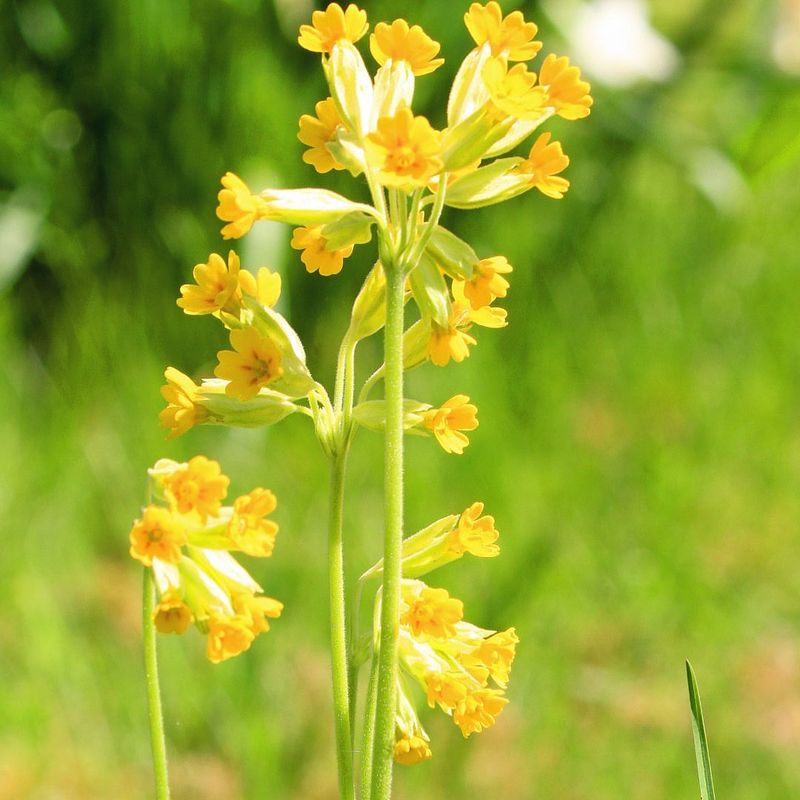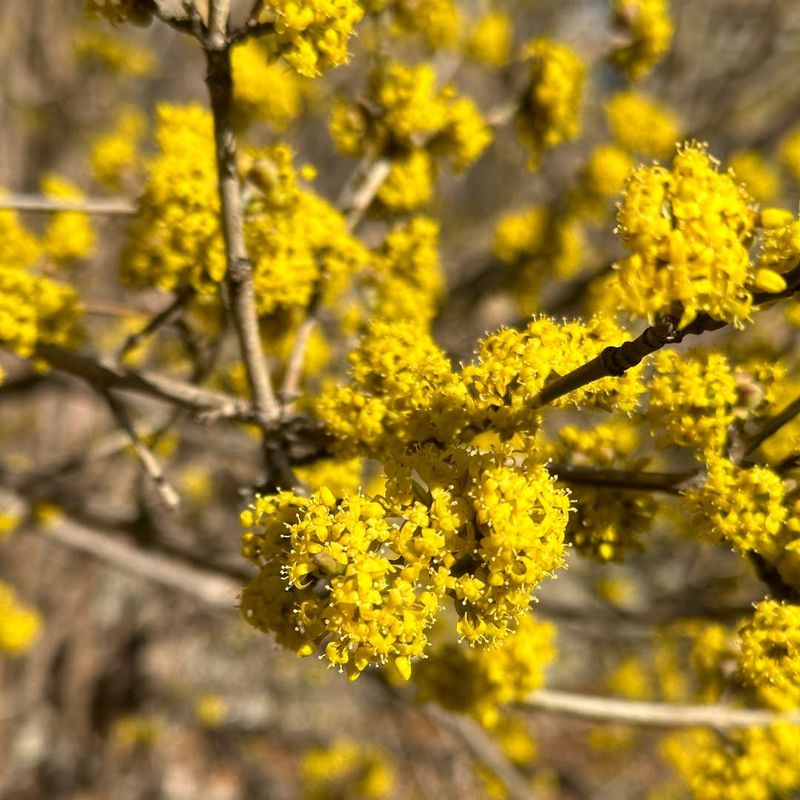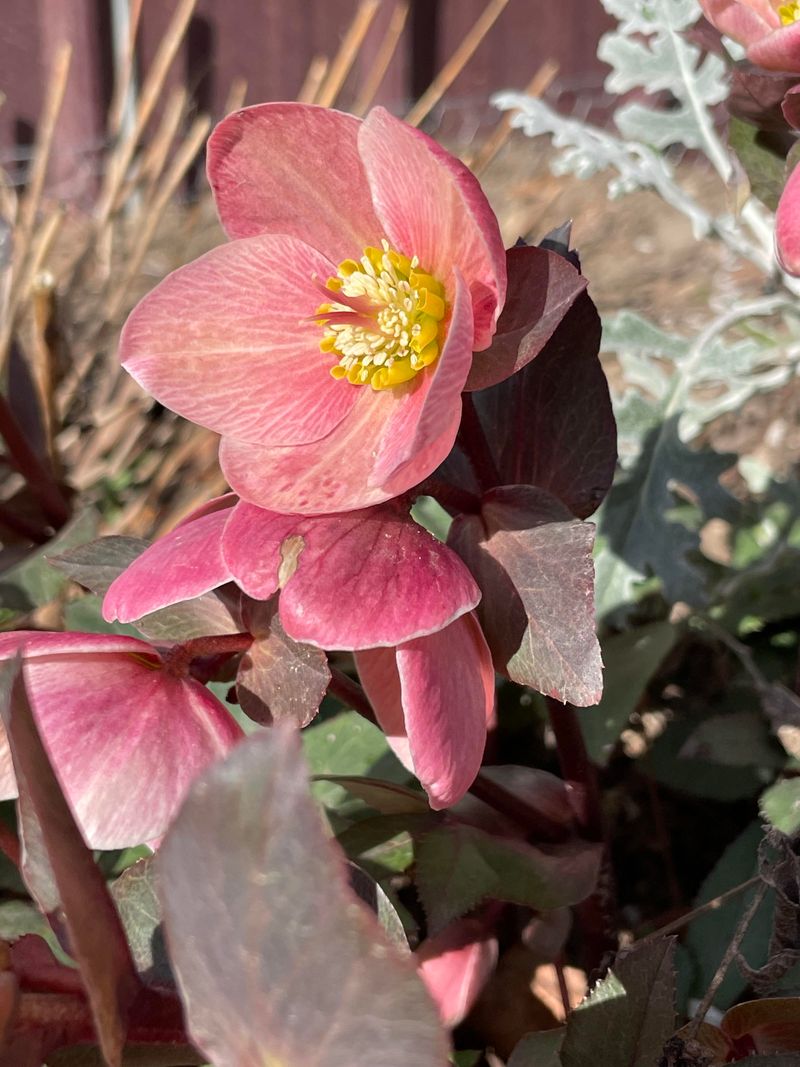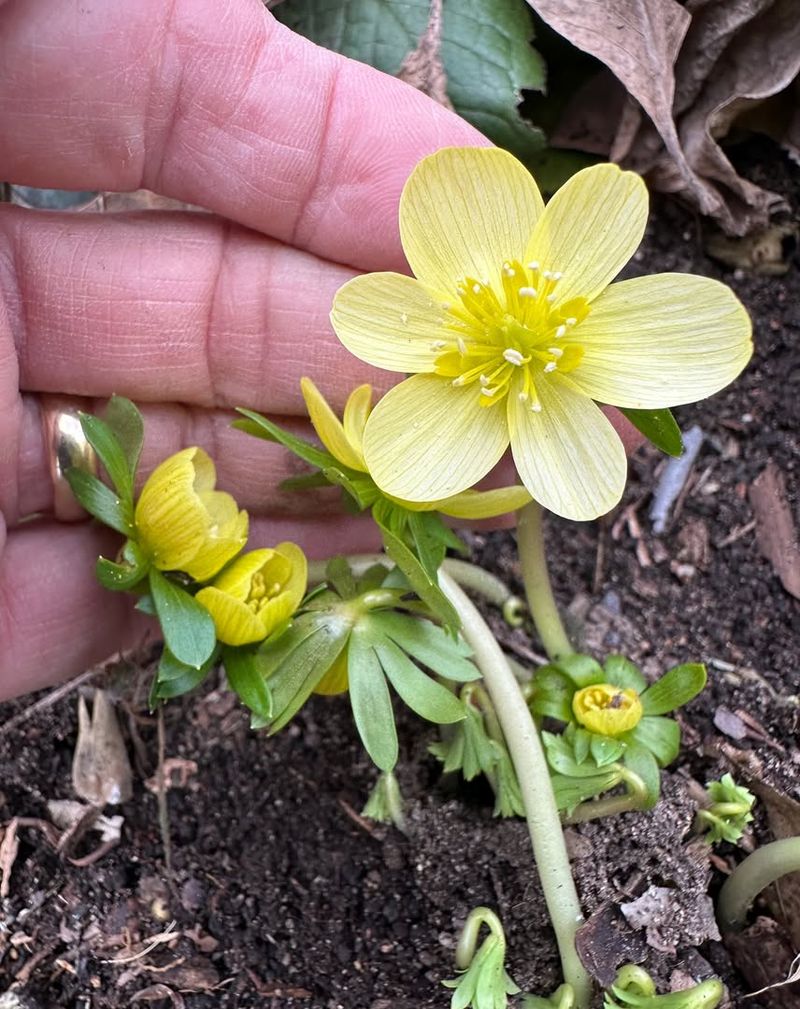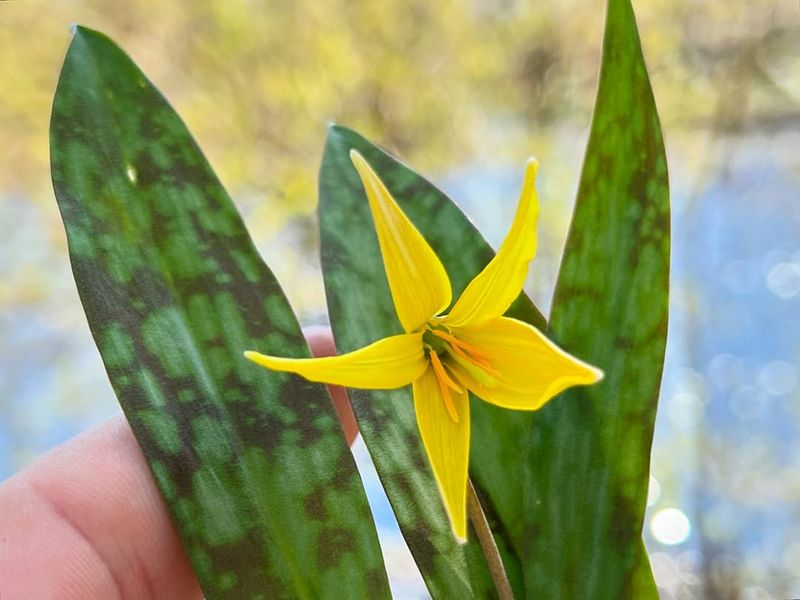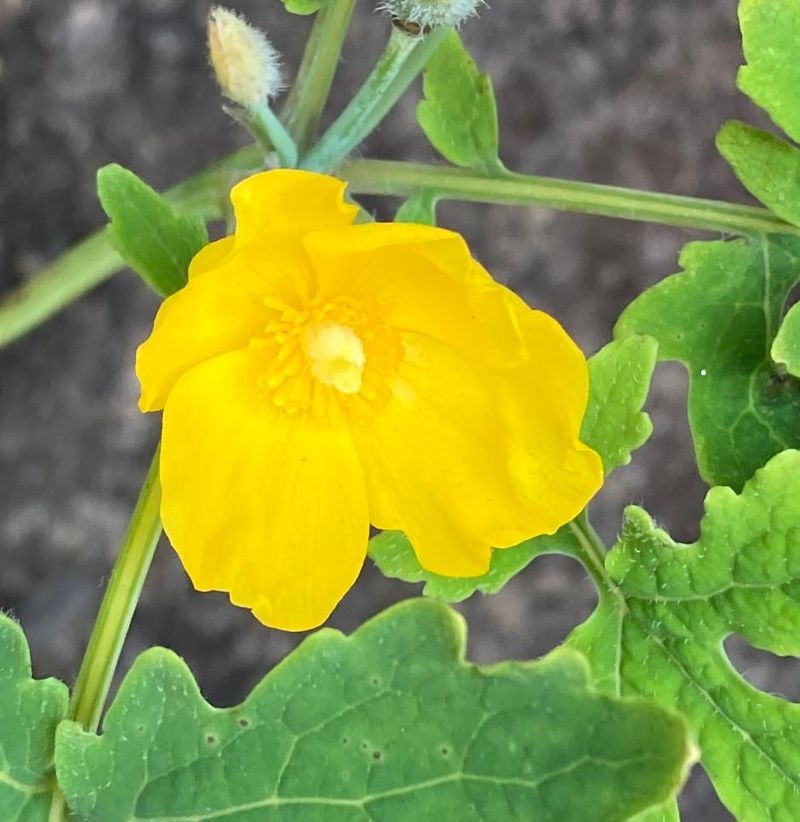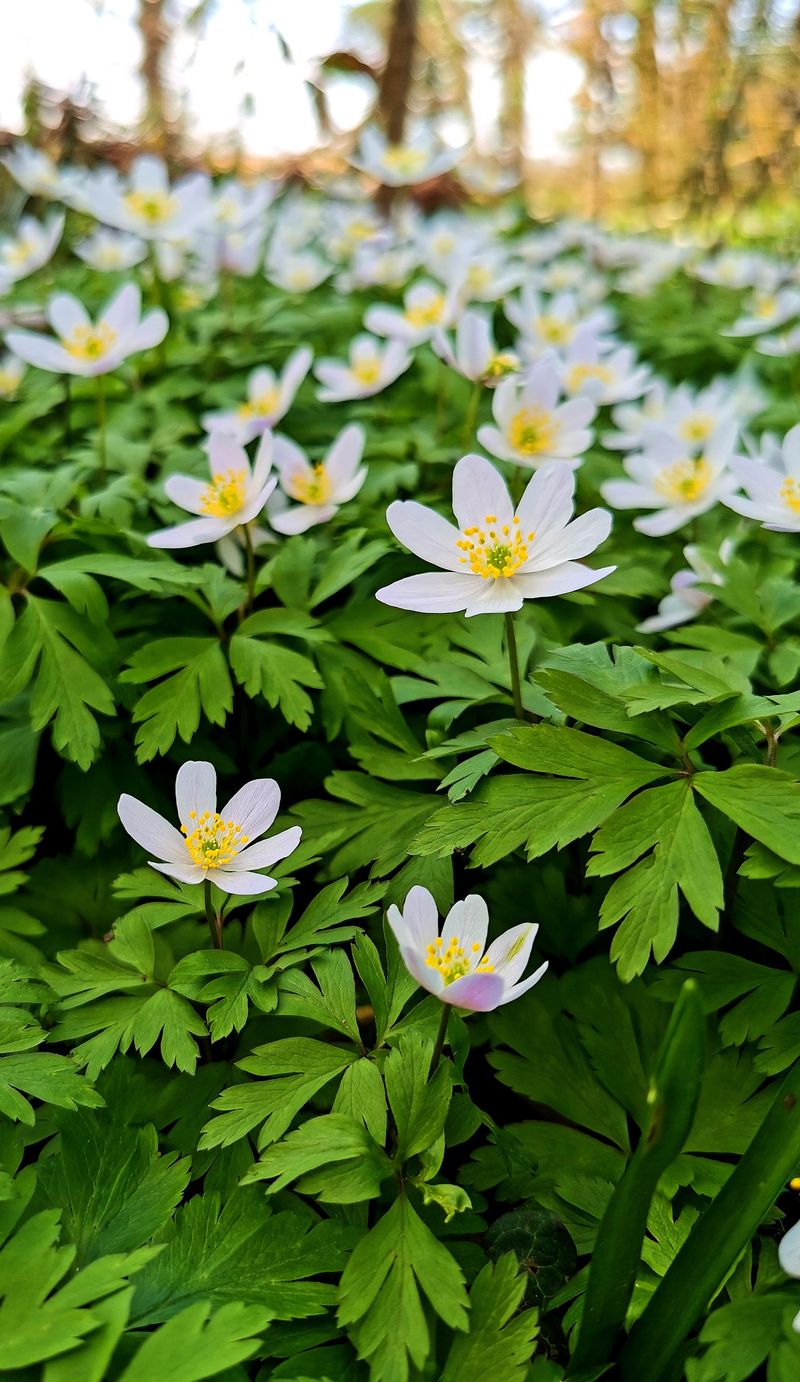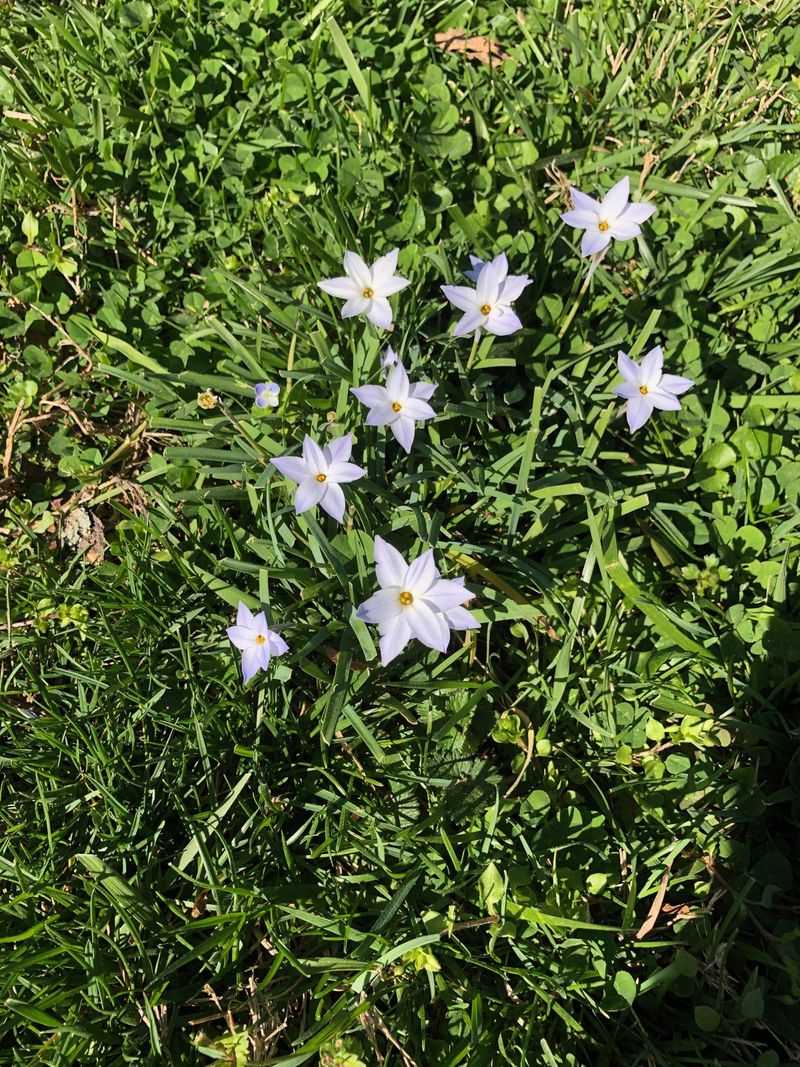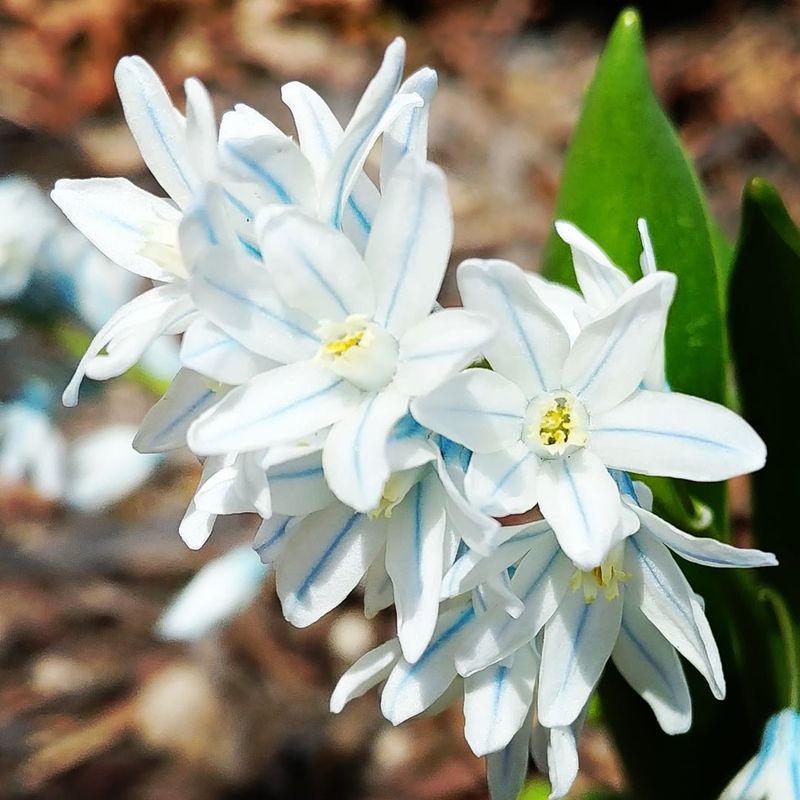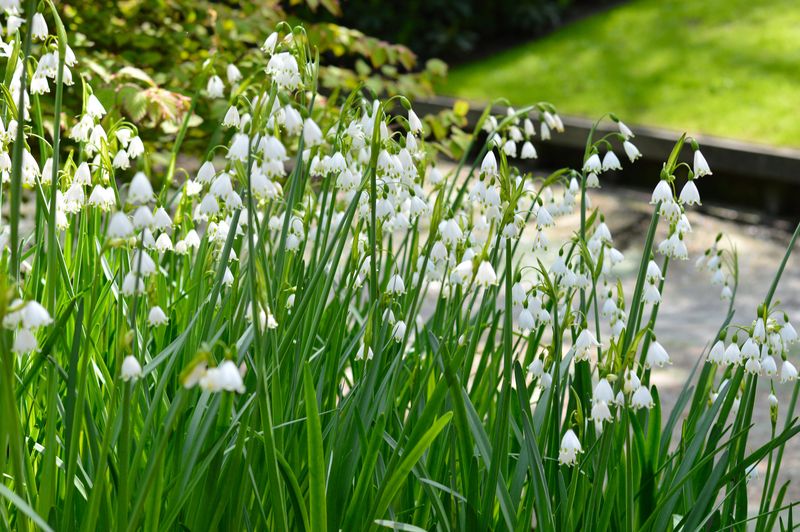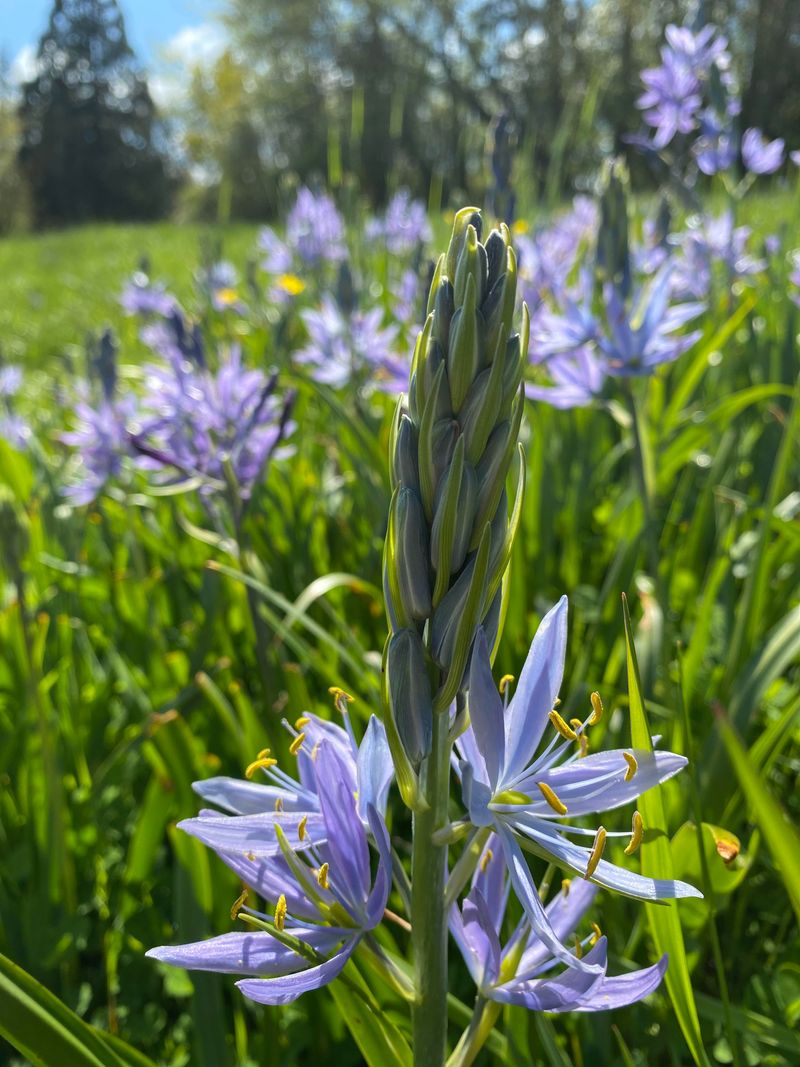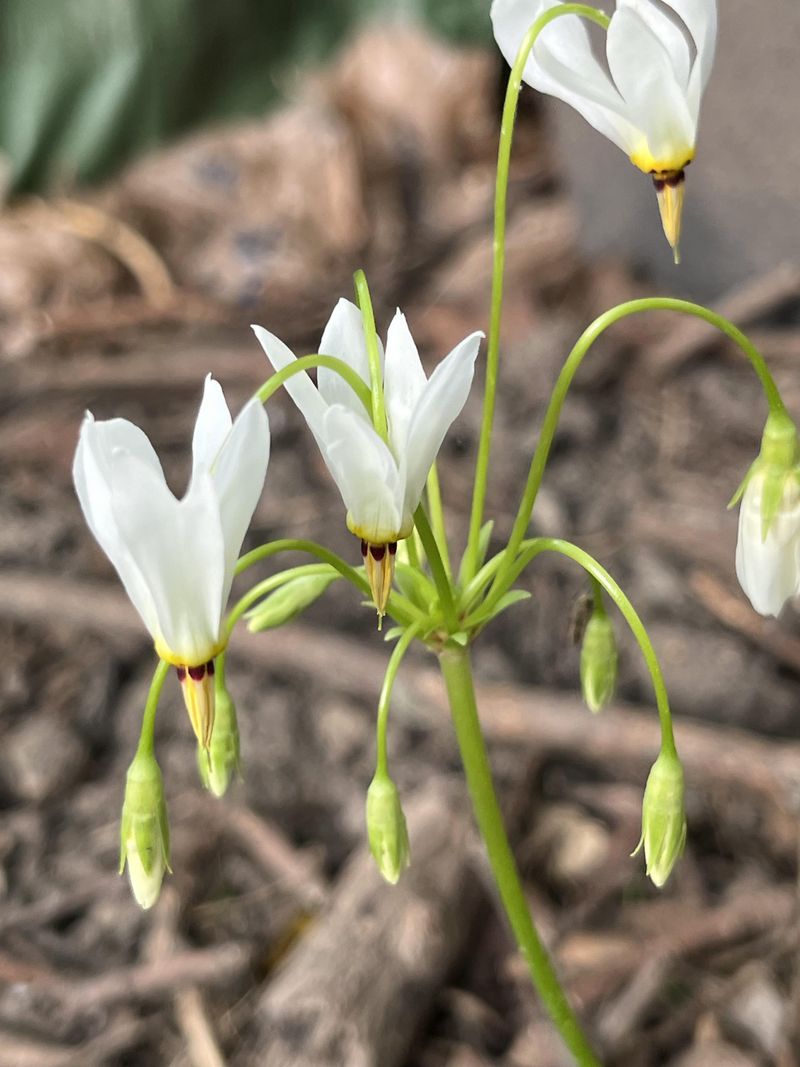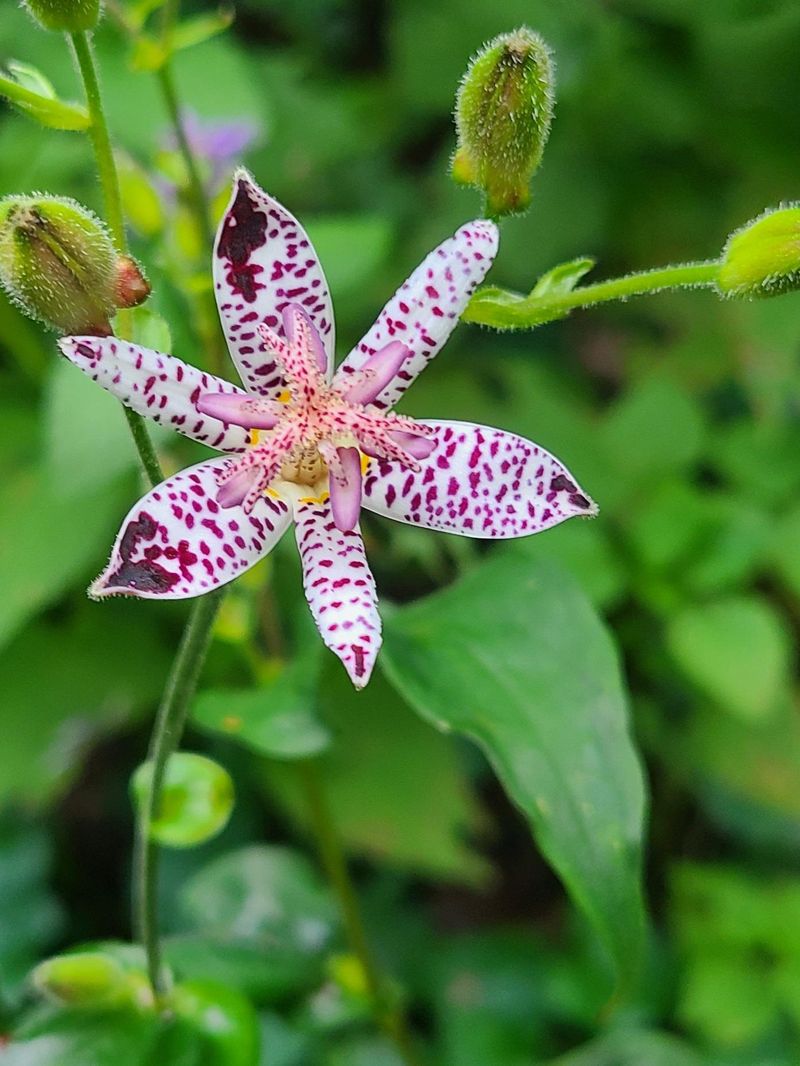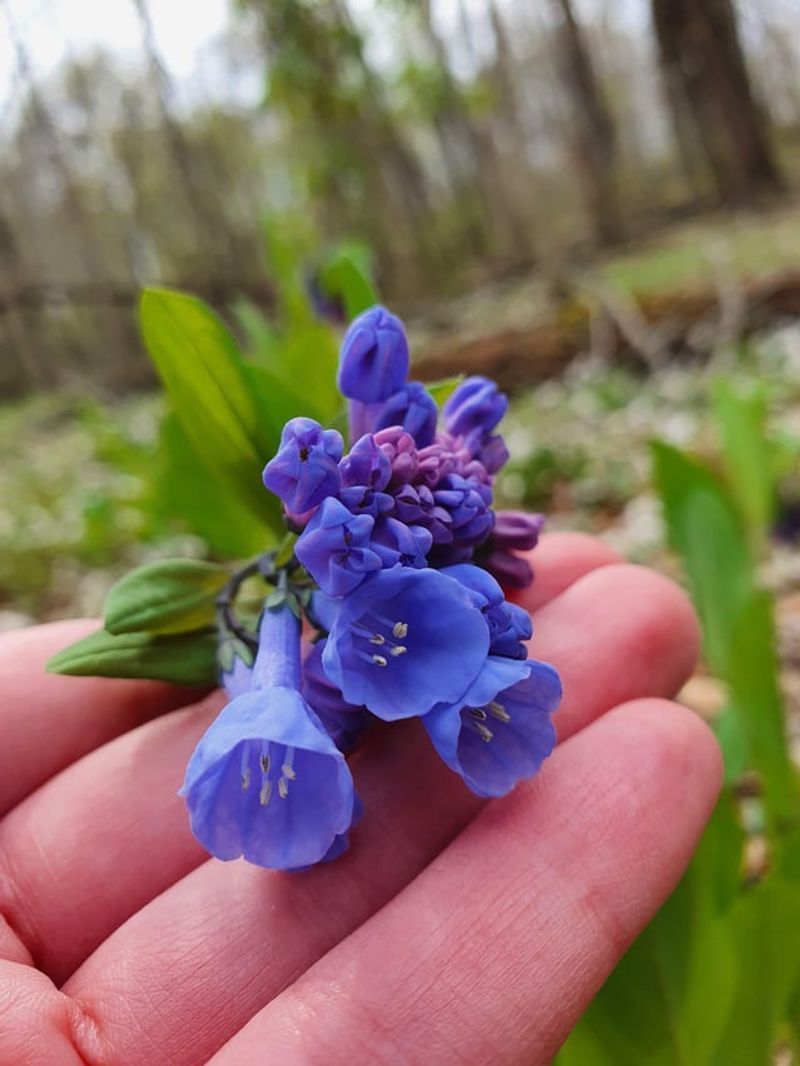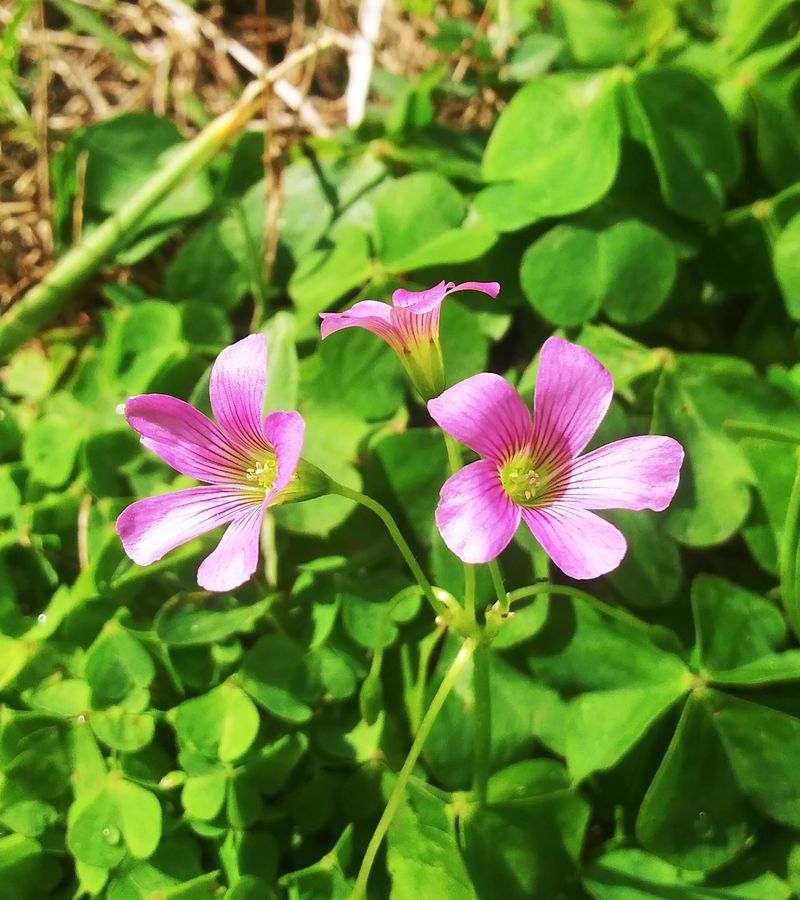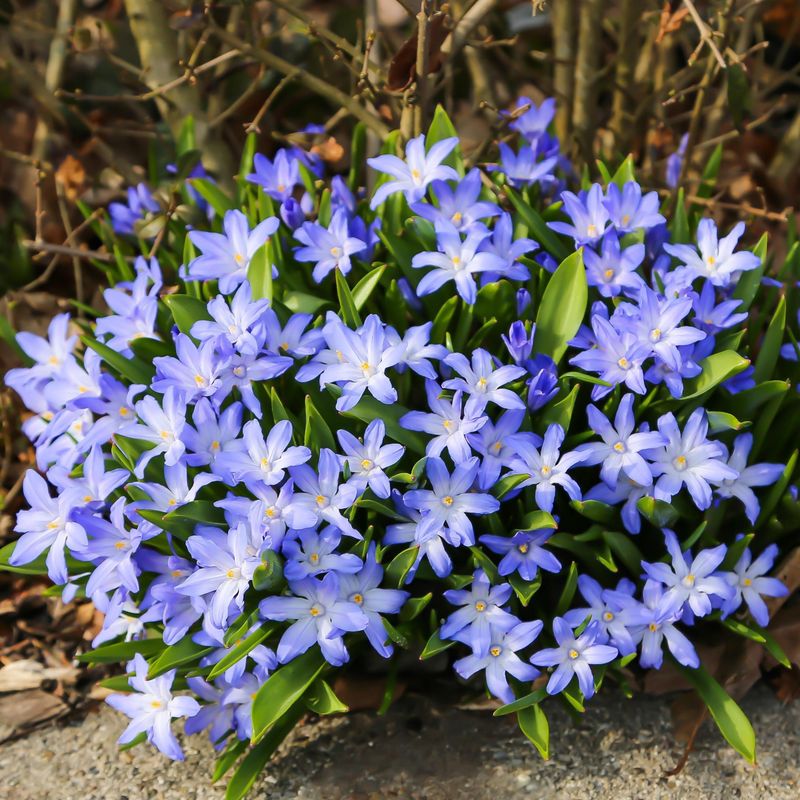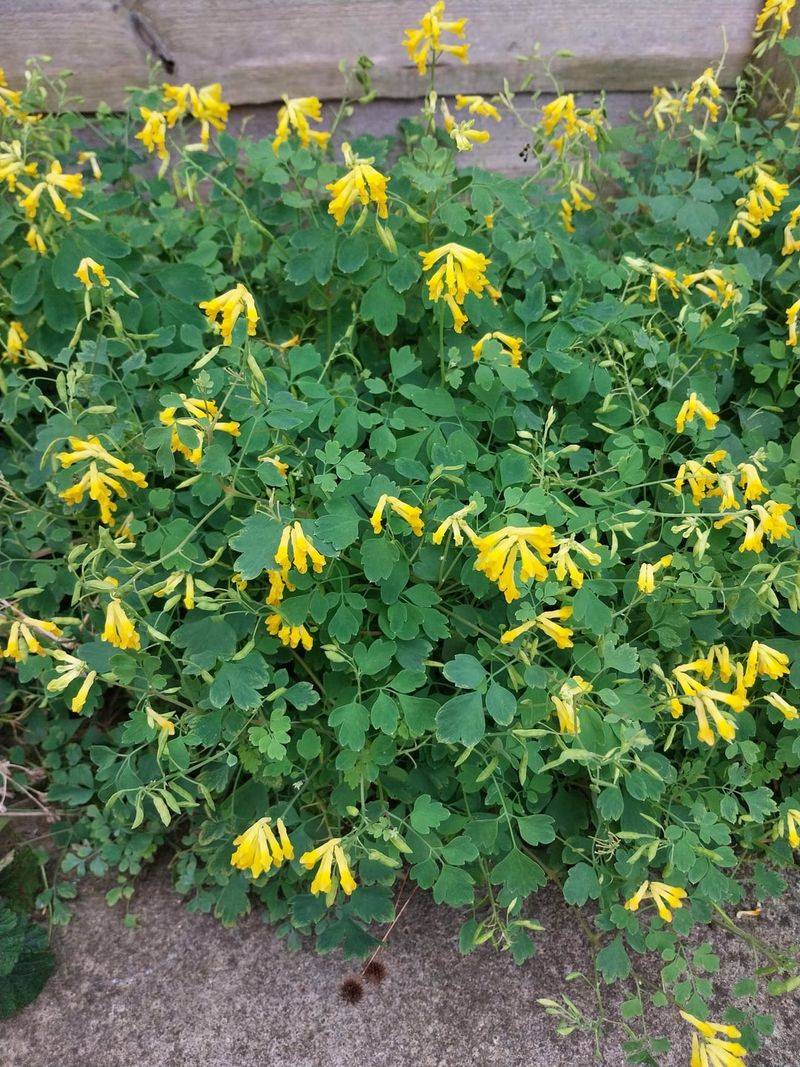Spring is here, and with it comes a dazzling array of blooms that often go unnoticed. While everyone is talking about tulips and daffodils, there are many hidden gems waiting to be discovered. These underrated spring flowers offer a unique charm and beauty that can brighten up any garden or bouquet. With their vibrant colors, interesting shapes, and delightful fragrances, these flowers are perfect for those looking to add something special to their springtime floral collection. Let’s explore some of these captivating blooms and give them the attention they truly deserve.
1. Snowdrop Anemone
Snowdrop Anemones are like little bursts of sunshine on a cool spring day. They open their delicate, white petals to reveal a cheerful yellow center, creating a delightful contrast.
These perennial plants thrive in well-drained soil and partial shade, making them ideal for garden borders. Plant them in clumps to create a stunning visual impact. With a gentle sway in the breeze, they add movement and life to any garden.
Surprisingly resilient, they return year after year, with little care needed. Their understated elegance makes them a captivating addition to any spring garden.
2. Lungwort
Lungwort, with its charming mix of blue and pink flowers, is a true springtime gem. Imagine walking through a woodland path and encountering these vibrant blooms nestled among the greenery.
They thrive in shady areas and are remarkably easy to care for. The speckled leaves add an extra layer of interest, making them a favorite among gardeners.
As an early bloomer, Lungwort provides essential nectar for bees emerging from their winter slumber. Their whimsical name and stunning colors make them a conversation starter in any garden or floral arrangement.
3. Virginia Bluebells
Soft, bell-shaped flowers of Virginia Bluebells dangle gracefully from arching stems, creating a sea of tranquil blue.
These lovely perennials embrace the woodland setting, thriving in moist and well-drained soil. When planted en masse, they form a breathtaking carpet of blue, reminiscent of a serene ocean.
Virginia Bluebells are perfect for naturalizing in a shade garden, where they can spread and fill the space with their calming presence. They are a must-have for anyone seeking a touch of elegance and peace in their garden.
4. Fritillaria Meleagris
Draped in moody purples and soft whites, the Fritillary’s nodding blooms bring a gothic grace to any garden. Like living ornaments, they hang delicately—part plant, part enchantment.
Their purplish-brown and white petals resemble a snake’s skin, hence the name. They thrive in damp meadows and woodland settings, where they can naturalize over time.
Plant them in groups to fully appreciate their unusual beauty. Fritillaria Meleagris is perfect for gardeners looking to add a conversation piece to their spring floral display.
5. Spanish Bluebells
Say hello to good vibes—Spanish Bluebells bring that happy splash of color your garden’s been craving.With their electric blue petals and classic bell shape, Spanish Bluebells steal the spotlight every spring.
These hardy perennials are easy to grow, adapting well to a variety of soil types and light conditions. Whether in a sun-dappled woodland or a sunny border, they thrive with minimal care.
Their robust nature and vibrant display make them a favorite for those looking to add a splash of blue to their floral palette. Spanish Bluebells offer an effortless way to enhance the beauty of any garden space.
6. Pasque Flower
Little treasures often tucked into rocky corners, these flowers quietly brighten up a garden. Pasque Flowers show off vibrant purple petals and golden centers that stand out against early spring’s muted tones.These hardy perennials thrive in well-drained soil and can often be spotted peeking through rocky landscapes. As one of the first flowers to bloom in spring, they provide a vital source of nectar for early pollinators.
With their fluffy, feathery seed heads, Pasque Flowers add texture and intrigue long after their blooms have faded.
7. Dogtooth Violet
Ever spotted a flower that looks like it’s mid-dance? Dogtooth Violets show off nodding yellow blooms that sway like tiny performers in the spring breeze.
These charming plants thrive in woodland settings, where their speckled green leaves blend seamlessly with the surroundings. As early bloomers, they herald the arrival of spring, peeking through the leaf litter with their bright, cheerful faces.
Dogtooth Violets are perfect for naturalizing in shady areas, offering a pop of color and a touch of whimsy. They are a joy to discover on a leisurely spring stroll.
8. Snake’s Head Iris
Looking for something a little different in your spring garden? Snake’s Head Iris feature striking purple and white veined petals that create a pattern you can’t help but stare at.
Unlike their more common iris cousins, these unique blooms are a true conversation starter. They thrive in sunny, well-drained locations, where their delicate beauty can be fully appreciated.
Plant them in clusters to create a striking display, or mix them with other spring flowers for a harmonious blend. Snake’s Head Iris offer a touch of exotic charm to your floral collection.
9. Checkerbloom
There’s no missing this spring showstopper. Checkerbloom brings bold pink blooms that light up the garden like bursts of pure joy.
They thrive in sunny meadows and open fields, where their lush green foliage provides a perfect backdrop. Checkerblooms are easy to grow and maintain, making them ideal for gardeners of all levels.
Their long-lasting blooms attract pollinators, adding life and movement to the garden. Checkerblooms are a wonderful way to inject color and energy into your landscape.
10. Grevillea
With their unique, spider-like blooms, Grevillea flowers are a standout in the plant world. Native to Australia, these plants thrive in sunny, well-drained spots and attract pollinators with their vibrant display.
Their red and yellow flowers attract pollinators, adding a burst of color and life to any garden. Grevilleas are remarkably drought-tolerant, making them an excellent choice for low-maintenance landscapes. Their unique appearance and vibrant hues make them a favorite among gardeners looking for something different.
Plant them in groups for a stunning visual impact, or mix them with other drought-tolerant plants for a harmonious display.
11. Siberian Squill
Siberian Squill, with its enchanting blue flowers, is a delightful herald of spring. These star-shaped blooms carpet the ground, creating a breathtaking blue tapestry.
They thrive in well-drained soil and partial shade, making them ideal for naturalizing in lawns and under trees. Siberian Squills are early risers, emerging in late winter to announce the arrival of warmer days.
Their vibrant blue color is a welcome sight after the drabness of winter. Siberian Squill is perfect for those looking to add a touch of magic to their spring landscape.
12. Cowslip
Known for their soft yellow blooms and sweet fragrance, these spring flowers are a classic favorite among wildflower lovers.
Cowslips grow best in sunny, well-drained spots and are excellent for attracting bees and other early pollinators.
They are easy to grow and maintain, making them an excellent choice for beginners. Cowslips are also a valuable source of nectar for early pollinators, supporting biodiversity in the garden. Plant them in drifts for a naturalistic, cottage-garden feel.
13. Cornelian Cherry
Cornelian Cherry might sound like a dessert, but it’s actually a delightful spring shrub. Its clusters of small, yellow flowers appear on bare branches, creating a striking visual effect.
This hardy plant thrives in a variety of soil types and conditions, making it a versatile choice for any garden. Cornelian Cherry is not only beautiful, but also practical, producing edible red fruits later in the season.
These fruits can be used to make jams and jellies, adding a touch of culinary delight to your garden. Cornelian Cherry is a true multi-seasonal gem.
14. Hellebore
Hellebores, often called the ‘Lenten Rose,’ are a treasure in any garden. Their nodding blooms appear in early spring, defying the lingering chill with their resilience.
These evergreen perennials thrive in shady spots, where their intricate flowers can be appreciated up close. Hellebores come in a variety of colors, from soft pastels to deep purples, offering something for every taste.
Their long-lasting blooms and leathery foliage make them a favorite among gardeners. Plant them in groups for a stunning effect, and enjoy their beauty year after year.
15. Winter Aconite
Winter Aconites are like little rays of sunshine breaking through the winter gloom. These bright yellow flowers appear in late winter, often peeking through the snow to announce the arrival of spring.
They thrive in woodland settings, where their cheerful blooms can spread and naturalize. Winter Aconites are a valuable source of early nectar for pollinators, supporting wildlife when few other flowers are in bloom.
Their vibrant color and early flowering make them a must-have for gardeners looking to extend the flowering season. Add them to shady borders for a pop of color.
16. Trout Lily
Did you know Trout Lilies often blanket forest floors with their mottled leaves and delicate yellow blooms?
These shade-loving perennials thrive in moist woodlands, creating a lush, springtime mosaic of color and texture.
Trout Lilies are early bloomers, offering a splash of color before most other flowers appear. Their name comes from the resemblance of their leaves to a trout’s skin.
Plant them in woodland gardens to enjoy their delicate beauty and naturalize your space. Trout Lilies are a charming addition to any shade garden.
17. Celandine Poppy
Celandine Poppies are like drops of sunshine in the shade. Their vibrant yellow blooms brighten up woodland gardens, creating a cheerful atmosphere.
These hardy perennials thrive in shady, moist environments, where their lush green foliage forms a beautiful backdrop. Celandine Poppies are easy to grow and maintain, making them a favorite among gardeners. Their long-lasting blooms attract pollinators, adding life and movement to the garden.
Plant them in groups for a stunning visual impact, or mix them with other shade-loving plants for a harmonious display.
18. Wood Anemone
Who could’ve guessed such delicate blooms could make such a statement in early spring? Wood Anemones dot the forest floor with their white, star-like flowers, swaying gently on slender stems in dappled shade.
These charming perennials thrive in shady, woodland environments, where they form lush carpets of blooms. Wood Anemones are early risers, heralding the arrival of spring with their cheerful presence.
They are easy to grow and maintain, making them a perfect choice for naturalizing in woodlands.
Plant them in drifts for a naturalistic effect, and enjoy their beauty year after year.
19. Spring Starflower
Spring Starflowers are like twinkling stars in the garden. Their star-shaped blooms burst forth in shades of blue and white, creating a celestial display.
They thrive in well-drained soil and full sun, making them an easy addition to any landscape. Spring Starflowers are early bloomers, providing a welcome splash of color to the winter-weary garden. Plant them in borders, rock gardens, or naturalize them in a lawn for a magical effect. Their delicate beauty and early flowering make them a must-have for any spring garden.
20. Puschkinia
Few spring flowers boast stripes—Puschkinia is one of them. Its pale blue blooms with delicate lines add a soft, jewel-like sparkle to garden beds and rockeries early in the season.
Puschkinia thrives in well-drained soil and full sun, making it perfect for rock gardens or borders. Plant them in clusters for a stunning display, or mix them with other spring bulbs for a harmonious blend.
Their early flowering period and gentle beauty make them a favorite among gardeners. Puschkinia is a delightful way to welcome spring into your garden.
21. Leucojum
Leucojum, also known as the ‘Snowflake,’ is a graceful presence in the spring garden. Their nodding white flowers, tipped with green, create an elegant and understated display.
These perennial plants thrive in moist, well-drained soil, making them perfect for naturalizing in meadows or garden borders. Leucojum blooms in mid to late spring, providing a bridge between the early and late flowering seasons.
Plant them in drifts for a naturalistic effect, and enjoy their gentle beauty year after year. Leucojum is a timeless addition to any floral collection.
22. Camas
Once prized as a food source by Indigenous peoples, these blooms now turn heads for their beauty. Camas flowers light up spring with star-shaped blue petals, thriving in sunny, moist soils and making a striking addition to any garden.
Camas is native to North America and holds cultural significance for indigenous peoples, who used its bulbs as a food source.
Plant them in groups for a breathtaking display, or mix them with other wildflowers for a naturalistic effect. Camas flowers are a wonderful way to add a touch of history and beauty to your garden.
23. Shooting Star
Shooting Stars are like little bits of whimsy in the garden. Their pink and white flowers hang gracefully from slender stems, creating a playful and enchanting scene.
These native wildflowers thrive in moist, well-drained soil and full sun, where they can naturalize over time. Shooting Stars are early bloomers, offering a splash of color before most other flowers appear.
Their unique shape and charming name make them a favorite among gardeners looking for something a little different. Plant them in meadows or woodlands for a touch of magic.
24. Toad Lily
Toad Lilies are like little jewels hidden in the shade. Their spotted purple and white flowers resemble exotic orchids, adding a touch of elegance to the garden.
These hardy perennials thrive in moist, shady environments, where their unique blooms can be appreciated up close. Toad Lilies are late bloomers, offering a burst of color in the fall when most other flowers have faded.
Their long-lasting blooms and easy care make them a favorite among gardeners. Plant them in woodland gardens for a stunning effect, and enjoy their beauty year after year.
25. Bristly Buttercup
Who needs the sun when these blooms show up? Bristly Buttercups flash their bright yellow petals like nature’s highlighters, adding instant cheer to spring gardens.
They thrive in sunny meadows and open fields, where their lush green foliage provides a perfect backdrop. Bristly Buttercups are easy to grow and maintain, making them ideal for gardeners of all levels.
Their long-lasting blooms attract pollinators, adding life and movement to the garden. Bristly Buttercups are a wonderful way to inject color and energy into your landscape.
26. Wood Sorrel
Wood Sorrel is like a little secret in the garden, with its delicate white blooms and clover-like leaves. These charming plants thrive in shady, woodland environments, where they form lush carpets of greenery.
Wood Sorrel is a favorite among wildflower enthusiasts, offering a touch of magic to the natural landscape. Their long-lasting blooms and easy care make them a perfect choice for naturalizing in woodlands.
Plant them in drifts for a naturalistic effect, and enjoy their beauty year after year. Wood Sorrel is a timeless addition to any garden.
27. Chionodoxa
When snow’s just melting, these blooms are already stealing the spotlight. Chionodoxa, or ‘Glory of the Snow,’ bursts into bloom with star-shaped flowers in soft blues and whites, lighting up early spring gardens.
Chionodoxa thrives in well-drained soil and full sun, making them an easy addition to any garden. Plant them in borders, rock gardens, or naturalize them in a lawn for a magical effect.
Their delicate beauty and early flowering make them a must-have for any spring garden. Chionodoxa truly lives up to its name, bringing glory to any floral collection.
28. Corydalis
Corydalis is like a burst of color in the spring garden, with its tubular blue and pink flowers. These cheerful blooms thrive in shady, moist environments, where their vibrant colors can be appreciated up close.
Corydalis is a hardy perennial, known for its long-lasting blooms and easy care. Plant them in woodland gardens or shaded borders for a splash of color and texture.
Their delicate beauty and unique shape make them a favorite among gardeners. Corydalis is a wonderful way to add a touch of whimsy to your landscape.

